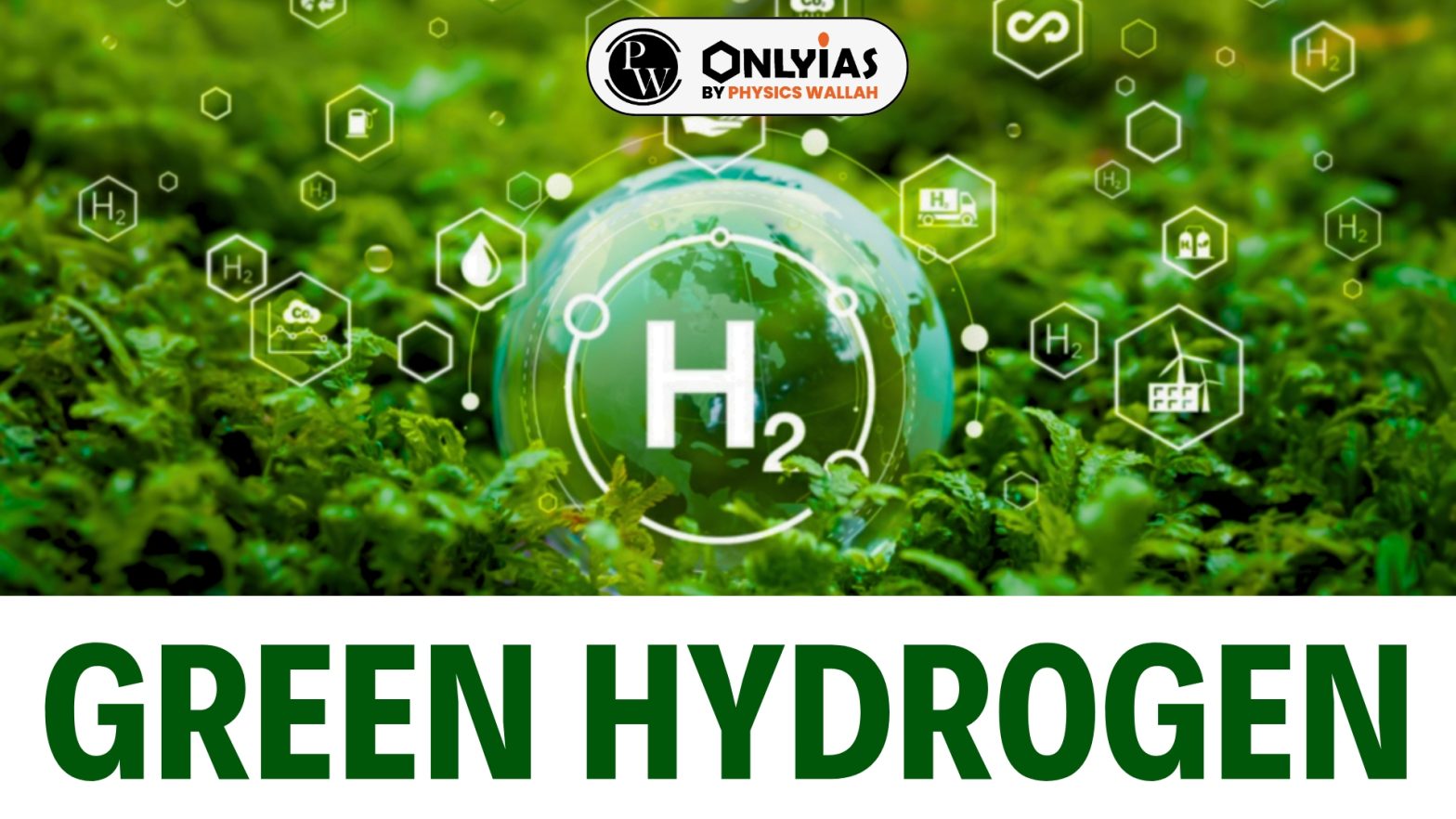Green hydrogen is an approach to producing environmentally friendly fuel using renewable energy. Learn more about Green Hydrogen, its uses, and benefits.

Green hydrogen is an environmentally friendly fuel produced using renewable energy sources. Unlike traditional hydrogen, which is derived from natural gas or coal, green hydrogen is generated through the electrolysis of water, powered by renewable energy like solar or wind. This clean energy alternative has gained attention for its potential to reduce carbon emissions and support energy transition, making it an essential topic for UPSC aspirants.
Green hydrogen refers to hydrogen produced with zero carbon emissions, using renewable energy sources to split water into hydrogen and oxygen through a process known as electrolysis. It offers a sustainable solution for industries and sectors that are challenging to decarbonize, such as steel production, transportation, and power generation.
Green hydrogen production relies on electrolysis, a process in which water (H₂O) is split into hydrogen (H₂) and oxygen (O₂) by applying an electric current. Key factors in its production include:
Green hydrogen has versatile applications across multiple sectors, helping to achieve net-zero emissions. Some common uses include:
Although, Green hydrogen is a sustainable approach to providing a solution to climate change challenges. However, it can still have some disadvantages. Check out the advantages and disadvantages of Green Hydrogen from here:
India has ambitious plans to become a global leader in green hydrogen production. The government is promoting investments and policies to support green hydrogen initiatives, with a focus on domestic production and export potential. India’s National Hydrogen Mission aims to develop green hydrogen at scale, ensuring sustainable energy access while reducing carbon emissions.
The National Hydrogen Mission, launched by the Government of India, aims to establish India as a hub for green hydrogen production. Key objectives include:
The adoption of green hydrogen in India aligns with global efforts to transition to sustainable energy, offering solutions to meet the challenges of climate change and energy security. For UPSC aspirants, understanding this topic is crucial, as it represents India’s vision for a cleaner, greener future.
Sign up for the PWOnlyIAS Online Course by Physics Wallah and start your journey to IAS success today!
UPSC Exam 2025 Related Articles
UPSC Prelims 2025 Exam
UPSC Notification 2025
UPSC Preparation 2025
UPSC Eligibility 2025
UPSC Exam Pattern
UPSC Syllabus
Green hydrogen is hydrogen produced through electrolysis powered by renewable energy, creating zero emissions.
It is produced by splitting water into hydrogen and oxygen using electricity from renewable sources like solar or wind.
Green hydrogen is used in industries, transportation, electricity generation, and as a backup power source.
Green hydrogen has zero emissions, supports renewable energy storage, has versatile applications, and reduces fossil fuel dependence.
The mission aims to make India a global hub for green hydrogen production, enhancing energy security, reducing emissions, and creating jobs.

<div class="new-fform">
</div>